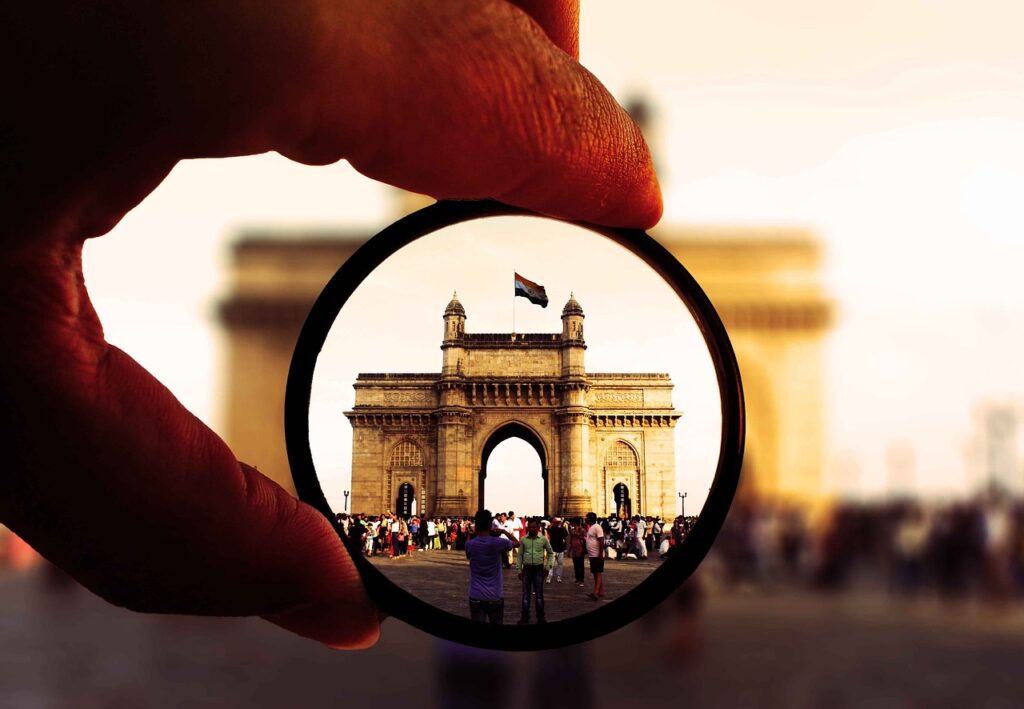The government has decided to build 50 cities as tourist destinations, Finance Minister Nirmala Sitharaman announced in her Union Budget 2023 speech. The selection of these cities will be based on a challenge set by the government.
The direct and indirect impact of the tourism industry in India is estimated to be slightly less than 10 percent of India’s GDP. But the economic multiplier of every rupee spent on tourism is said to be 3-4 times which, as a sector, is possibly the highest. This is because the tourism supply chain in India has a very long tail; as it gets closer to the last mile, the supply chain creates employment for several micro and solo entrepreneurs. For example, the local cab drivers and retail outlets catering to tourists are directly dependent on tourism traffic. Such informal entrepreneurs cannot be supported or created by any other initiative or scheme of the government; it’s only via tourism traffic that they can earn their living. Their products and services are also part of the experience for tourists.
Four important pillars should be considered to create a system for the tourism sector.
First, the development of tourism cannot be left to just the Ministry of Tourism. It has to be seen as a mission with several ministries including civil aviation, roads and surface transportation, culture, housing and urban affairs, environment and forests, home, and external affairs. All these need to be involved as tourism impacts and benefits multiple sectors. Even departments such as the Archaeology Survey of India (under the Ministry of Culture) have an important role at the Central government level. A national mission-like structure under the PMO across ministries has to be built at the Central and state levels if the new destination has to be created, developed, and grown.
Secondly, digital infrastructure has to be created to make the whole process of booking, logistics, and experience, a seamless one. PM Gati Shakti, which is focusing on developing a multi-modal infrastructure in the country, “brings 16 Ministries including Railways and Roadways together for integrated planning and coordinated implementation of infrastructure connectivity projects. The multi-modal connectivity will provide integrated and seamless connectivity for the movement of people, goods, and services from one mode of transport to another. It will facilitate the last-mile connectivity of infrastructure and also reduce travel time for people. Economic Zones like textile clusters, pharmaceutical clusters, defence corridors, electronic parks, industrial corridors, fishing clusters, and agri zones will be covered to improve connectivity and make Indian businesses more competitive. It will also leverage technology extensively including spatial planning tools with ISRO (Indian Space Research Organisation) imagery developed by BiSAG-N (Bhaskaracharya National Institute for Space Applications and Geoinformatics).”
This offers a model for tourism too as delivering tourists from domestic and international locations to a tourist destination is also a logistics issue. Current private systems are not sufficiently transparent about the cost and amenities at the last mile, creating a wide customer disconnect with the Indian tourism experience. This digital public good platform can plug in all the service providers from airlines booking apps, hotel booking apps to the last-mile cab and tourist guides into one. This, by its very nature, would lead to standardization of pricing; with transparent ratings, this would result in service providers improving the experience at the last mile. The transparent rating system is an important element for improving services. In informal labour markets like plumbing, electricians and even cleaning, the impact of platforms like Urban Clap has been enormous. Not only has the pricing been standardized, but the quality of service has been improved dramatically as the individual gets higher business on the basis of the rating received.
The rating system has to be a part of the digital public platform as it has been abused and misused by both hotel booking and other travel platforms so much that it is no longer trusted by customers. Improving ratings on a hotel booking platform is now a question of the marketing spend by the hotel and adverse ratings are sometimes not even aggregated or allowed by these platforms. Therefore, to rebuild or build digital trust in the tourism supply chain, global and domestic travellers need to be given a better experience with trust and redressal mechanisms built in.
The third pillar is the most important as it is part of the software of tourism–the cultural aspect of tourism. The stories that will appeal to the world will arise from cultural assets. The destination is interesting because of the story behind it. Encouraging the private sector, especially entrepreneurs from across India-to actively participate in various aspects of tourism from crafting and delivering safe, enjoyable, informational, and experiential experiences in partnership with the government and other agencies-is where an organisation like NICE (Network of Indian Cultural Enterprises), which is creating an ecosystem of cultural entrepreneurs, comes into play. The draft tourism policy of the country currently ignores the role cultural assets play in tourism. The physical marvels of the country are always compared and contrasted with other countries’ marvels like ski resorts or beach destinations. These comparisons end up comparing cost, efficiencies, and quality of infrastructure. The hard physical infrastructure in India has to be certainly improved and is part of the first pillar. But the more important part that actually creates a unique experience is the cultural asset, for example, heritage, spirituality, wildlife, food, arts and crafts, and wellness related to the location. These cultural assets have never been systematically built, supported, or promoted as part of our tourism experience. This is the biggest sleeping giant of job creation that has to be awakened for long-term employment by the government. There has been no systemic thinking on how to promote and improve the cultural assets in the country and generate livelihoods and prosperity.
These assets can then be preserved not just through state interventions or investment, but in a more sustainable manner by micro-entrepreneurs who would earn their living from these living assets.
CIPP’s (Centre for Innovation in Public Policy) multi-year research into cultural assets in the country shows that 2-3 percent of the GDP can be unleashed by converting these assets into economic assets. The conversion of cultural assets into economic assets requires a systemic approach and can be done at the national level using digital public platforms. These assets need to be recognised and then be made part of the tourism mission, both for domestic and global visitors. This is an area where we need to spend the most effort as this is where the maximum multiplier impact lies. Unleashing the job does not need investment but a systemic approach to promoting these assets. Promotion does not mean spending global dollars, as has been done in the past but in today’s world of social media, it means telling the stories behind these cultural assets.
Unleashing cultural assets needs distributed intelligence and systems that can enable that intelligence to build a market and entrepreneurs to attract people to experience these assets. This has to happen on a distributed platform basis which exists in the open source world, as it is not owned by the government or one single entrepreneur, but is capable of adapting and accepting millions of entrepreneurs into its fold, without being monopolistic in nature ever, in the future.
The fourth pillar is sustainability. The recent incidents in Uttarakhand, particularly in Joshimath and adjoining areas, show that there has to be planned development. Almost every area that will invite tourists needs to follow good practices for sustainable development. There has to be a critical mass of development allowed after which there can be no construction. This unplanned method of allowing habitation can lead to ecological disasters. The draft tourism policy talks in detail about sustainability and green tourism but mostly in a pedantic way, hence it needs to be updated with critical barriers being established for ecological sensitive area, and a system built to monitoring and controlling growth there.
The systemic approach to building these four pillars is not a linear one but a parallel one as each of them has an investment, production, and result cycle. The reason this needs to be in a mission approach with clear targets is that several different parts of the government have deliverables here. There is an important role for all end-poverty, non-profit organisations as this can be the largest employment generation program to create jobs.
K Yatish Rajawat is the founder of the Gurgaon-based think tank CIPP; Sanjay Anandaram is the C0-founder of NICE.
The article was originally published in News18.





